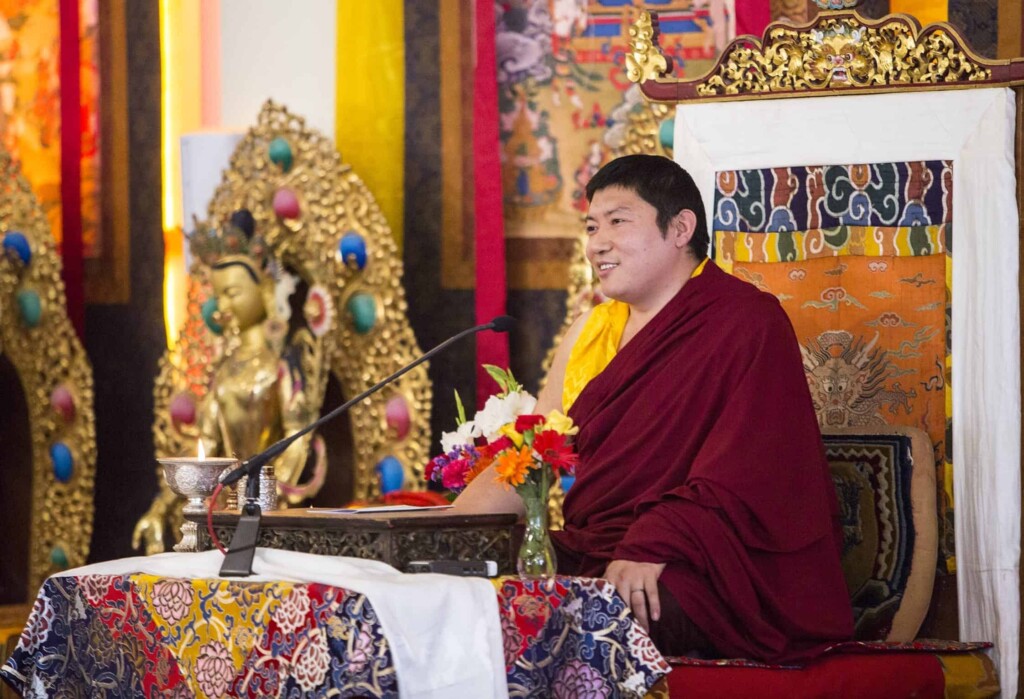Understanding emotions serves as a first step toward overcoming our basic ignorance. In this video clip, Phakchok Rinpoche shares his personal experience of coming to grips with his emotions. He describes the strong emotions of his teenage years and explains the gradual steps he took by practicing meditation. The more relaxed, softer, and non-clinging mind that he discovered can be ours when we choose to take up meditation training.
Understanding Emotions Requires Investigation
Rinpoche describes how he came to understand his own emotions in a gradual progression as he aged from his teens until his mid-twenties. We can all probably relate to the story he tells of experiencing anger, attachment, and jealousy.
Many of us might have experienced the feelings of smoldering rage like a barbecue as well as the internal burning of jealousy that is is more like a microwave. We can also recognize that these emotions are painful in different ways, right?
These analogies can be very helpful in helping us to look at our emotions as passing experiences. But in the heat of the moment, we can blaze or cook in anger or jealousy. And we often make the situation worse by holding on to these feelings for hours, days, or even longer. And if we recognize this, then we can ask the questions: Does this feel good? Do we benefit?
Understanding Emotions and Self-Cherishing
In addition, Rinpoche suggests that we dig a little deeper. Again, he gives us examples from his personal experience. We can begin to ask questions about emotions. Who is angry or jealous? Who suffers and who complains? Then as we do this, we slowly realize that we’re focusing on “me.”
My pain, my difficulties. These all involve a strong sense of self-cherishing or grasping. But why don’t we see this right away? Because we’re usually ignorant of the extent of our attachment to ourselves. So first, we need to recognize this, and then we need to admit the source of the problem.
Meditation Allows Us Space to Soften
Now, once we’ve seen the reality of our situation, things don’t magically change. But slowly and steadily, we can unclench and relax our self-clinging because we can see how it doesn’t bring any benefit. And gradually our compassion will widen and become more sincere. In the beginning, as we practice compassion, we may feel that we are faking it a bit (or a lot!). That’s ok! We are undoing a lifetime of self-centered habitual patterns, so we can’t expect immediate results. However, if we stay with meditation on compassion then we’ll build new networks and patterns, and the compassion will become genuine.
We’re meditating and we should remember that the Tibetan word for meditation, “Gom” (Tib. sgom) means becoming familiar with or habituating. If we just keep doing the practice without judging ourselves, comparing, or expecting something, then compassion has space to soften us.
As Rinpoche notes, we will then find ourselves softening just as the ice slowly melts in the warmth of the sun.
Interested in Learning More About Meditation?
We hope that this teaching has inspired you to begin or to recommit to meditation practice. At Samye Institute, we offer several home-study programs that allow you to get a deeper understanding of working with your mind. Training the Mind: An Introduction, provides a short, easily digestible, exploration of how we can gain familiarity with the mind. Individuals who are interested in a more intensive, year-long learning, reflection, and practice program are encouraged to explore The Path of Meditation Level One.










Responses